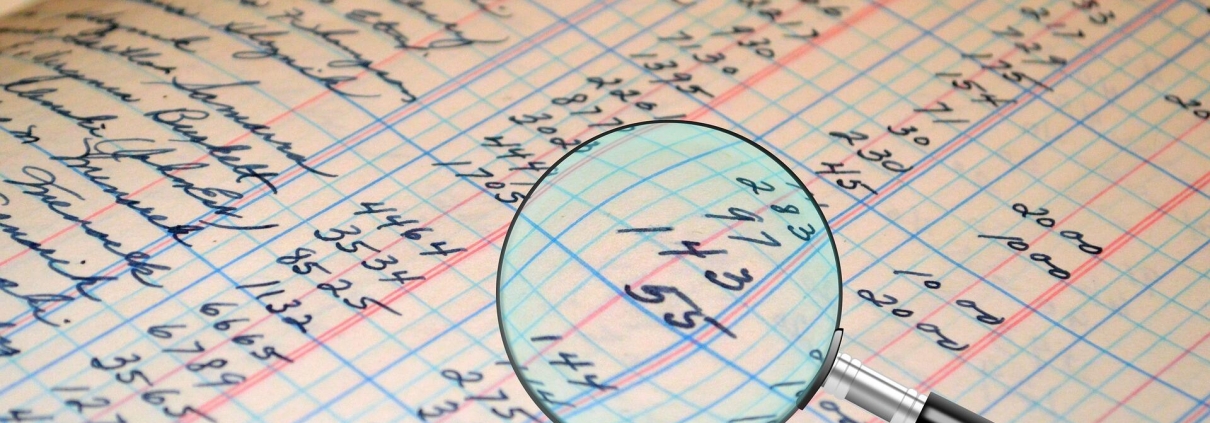Accounting general ledger in Morocco – 1 comprehensive guide
The general ledger occupies a central position in business accounting. It is an essential accounting document that meticulously records all of a company’s financial transactions.
Each transaction is recorded and detailed by account, which allows a clear and precise vision of the company’s economic activity.
This rigorous organization of the general ledger is crucial because it not only facilitates daily accounting management but also plays an essential role in keeping a trace, a trail from the supporting document to the aggregate in the financial statements. It is therefore not strange that this is one of the first books you will be asked for during a tax audit .
In this article, we take a deep dive into the world of accounting.
We will break down the functions of the accounting ledger, explain how it works, and above all, shed light on why it is so vital to the accounting health of your business.
Whether you’re a seasoned entrepreneur or new to accounting, understanding the importance of the ledger can radically transform the way you look at accounting.
From tax planning to strategic decision-making, the accounting ledger is hidden somewhere as an essential tool for building the statements that will help effectively drive your business to success.
What is the general ledger?

The general ledger (GL) is an accounting document which groups together all the operations carried out by the company by account. Indeed, it is a fundamental element of business accounting, serving as the cornerstone of bookkeeping.
The general ledger is a register which presents all of the company’s accounting operations account by account. In fact, the chart of accounts divides accounting operations into separate accounting accounts. Each account corresponds to a category of operations:
- purchasing (goods, materials, services, subcontracting, etc.);
- sales (products, services, ancillary sales, etc.);
- salaries (basic salary, allowances, social charges.
Keeping accounts consists, in fact, of imputing each of the company’s transactions to the appropriate account (accounting allocation). This is, in fact, a first step in the preparation of the company’s financial statements.
So, for example, each supplier invoice that is received by the company leads to the creation of at least two entries:
- On the one hand, an entry which notes a charge in the company’s accounts (or an expense);
- On the other, an entry which records either the payment of this expense or the recognition of a debt towards the supplier.
As a result, as many accounting accounts are created in the accounting (the chart of accounts) in order to accommodate each of these entries. Each of these scriptures tells the story of a transaction.
Importance of the general ledger in Moroccan accounting and taxation
How does the general ledger work?

It is generally organized in table form. In modern accounting, companies keep this document electronically. This is precisely what accounting software is for .
Each row corresponds to an operation carried out by the company (purchase, sale, salary payment, etc.), while each column corresponds to an accounting account (supplier account, customer account, salary account, etc.).
Thus, each time we record an operation in the ledger in the form of a line which indicates the amount of the operation and the account concerned. Each operation carries a debit (which corresponds to the use) and a credit (which corresponds to the source)
The operation of this accounting statement is relatively simple.
Each time an operation is carried out by the company (purchase of goods, sale of products or services, payment of salaries or social charges), it must be recorded in the GL.
To do this, simply add a line to the table, indicating the amount of the transaction and the account concerned. In the jargon, this is called an accounting entry. Indeed, an accounting entry is an operation which consists of recording a financial transaction in the company’s general ledger, indicating the account concerned and the amount of the operation.
This document then makes it possible to follow the evolution of the different accounting items over time.
Thus, it is possible to know at any time how much the company owes to its suppliers, how much it has received from its customers, how much it has spent on salaries and social charges, etc.
Why is this accounting document so important for your business?
The general ledger is an essential accounting document for all businesses, regardless of their size or sector of activity. It makes it possible to monitor the evolution of different accounting positions over time, which facilitates the accounting and tax management of the company.
In fact, the ledger allows you to:
- First, follow the evolution of the different accounting items: thanks to the general ledger, it is possible to know at any time how much the company owes to its suppliers, how much it has collected from its customers, how much it has spent on salaries and social charges, etc. This allows you to have a clear and precise vision of the financial situation of the company.
- Then, Facilitate accounting management: GL makes it possible to group all operations carried out by the company by account. Thus, it is easier for the accountant or chartered accountant to manage the various operations and establish financial statements (balance sheet, income statement).
- Finally, Comply with tax obligations: the GL is a mandatory accounting document for all companies. In particular, it makes it possible to justify the various operations carried out by the company in the event of a tax audit.
How to keep a ledger?
To maintain this document effectively, it is important to respect certain rules:
- First, record all operations: each time an operation is carried out by the company (purchase, sale, salary payment), it must be recorded in the ledger.
- Second, classify transactions by account: each transaction must be classified in the corresponding account (supplier account, customer account, salary account, etc.).
- Third, check balances: it is important to regularly check the balances of different accounts to avoid errors and oversights.
- Finally, archive: the ledger must be kept for a minimum period of 10 years. It is therefore important to archive it correctly to be able to find it easily if necessary.
In conclusion,
The general ledger is an essential accounting document for all businesses.
It allows you to monitor the evolution of different accounting positions over time. As a result, it facilitates the accounting and tax management of the company.
To maintain a ledger effectively, it is important to:
- Record all operations,
- Classify transactions by account,
- Check balances regularly
- and, finally, correctly archive the ledger.
Finally, it is important to emphasize that the law allows this document to be kept manually or electronically. However, from now on it is still difficult to find manual holding in practice.
It is essential to respect the accounting rules in force to avoid any problems with the tax administration .
If you have any questions about maintaining the general ledger, do not hesitate to contact an accountant . Indeed, he will be able to advise you and support you in the accounting management of your business.
FAQs
- What is the General Ledger in accounting? The General Ledger is an accounting document that summarizes all the financial operations of a company, classified by account.
- Why is the General Ledger important for businesses? It is crucial for accurate financial tracking, financial performance analysis and legal compliance.
- How is the Ledger linked to the Journal Book? The transactions recorded in the Journal Book are classified and detailed in the General Ledger according to the accounts concerned.
- What is the role of the Ledger in Moroccan taxation? It serves as the basis for calculating tax levies and ensures the necessary transparency in matters of taxation.
- What are the consequences of inadequately maintaining the Ledger? This can result in tax risks, such as rejection of accounting by the tax administration, tax adjustments, and penalties.



